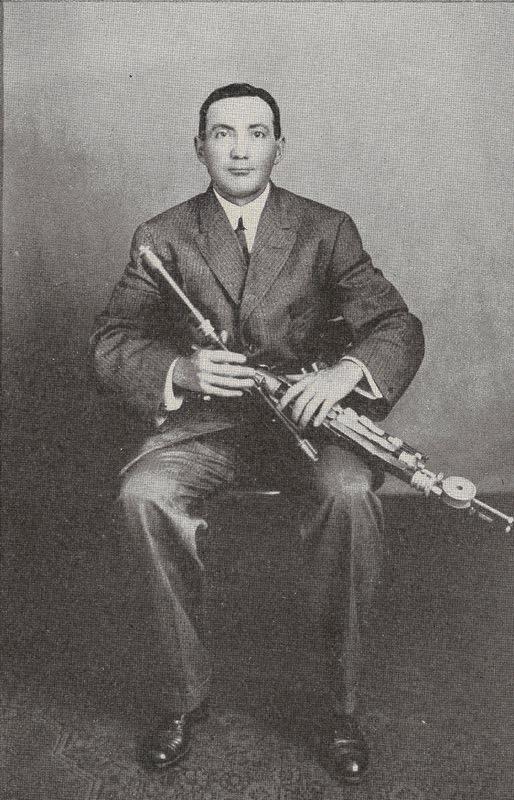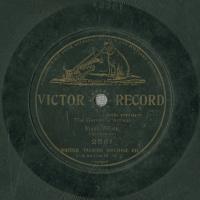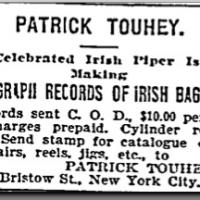Patrick "Patsy" Touhey
MusicianPatsy Touhey left Ireland at age three and as a very young man began performing on the Irish bagpipes. By the time he had entered his late teens he was a virtuoso on the instrument. Toughey was a professional performer his entire life, touring with “hibernicons” which offered staged tour of Ireland, with George M. Cohan’s family troupe, and in Vaudeville. He performed in the “Irish Village” at the 1893 Columbian Exposition and was among the first musicians to experiment with recording. His recording give us an example of how ethnic music was played and received in the late 19th and early twentieth centuries.
In the 1890s Touhey began a mail order business in which customers would request tunes, and Touhey would play them onto an Edison Cylinder, then mail the cylinder to the customers at a rate of $10 per dozen. Later, when the “ethnic recording” boom started after WWI Touhey recorded frequently: A 1919 recording has him playing a medley of reels starting with “Drowsy Maggie.” (https://www.loc.gov/item/jukebox-34198/) Touhey’s recordings helped establish the tradition, now common in Irish music, of playing three tunes in a row.
A “stage Irishman,” he often wore stereotypically Irish outfits and performed comic skits that mocked Irish accents and beliefs. At the 1904 St. Louis exposition a group of Irish and Irish American performers refused to go on stage with him, regarding his “act” as degrading.
In the 1890s Touhey began a mail order business in which customers would request tunes, and Touhey would play them onto an Edison Cylinder, then mail the cylinder to the customers at a rate of $10 per dozen. Later, when the “ethnic recording” boom started after WWI Touhey recorded frequently: A 1919 recording has him playing a medley of reels starting with “Drowsy Maggie.” (https://www.loc.gov/item/jukebox-34198/) Touhey’s recordings helped establish the tradition, now common in Irish music, of playing three tunes in a row.
A “stage Irishman,” he often wore stereotypically Irish outfits and performed comic skits that mocked Irish accents and beliefs. At the 1904 St. Louis exposition a group of Irish and Irish American performers refused to go on stage with him, regarding his “act” as degrading.




